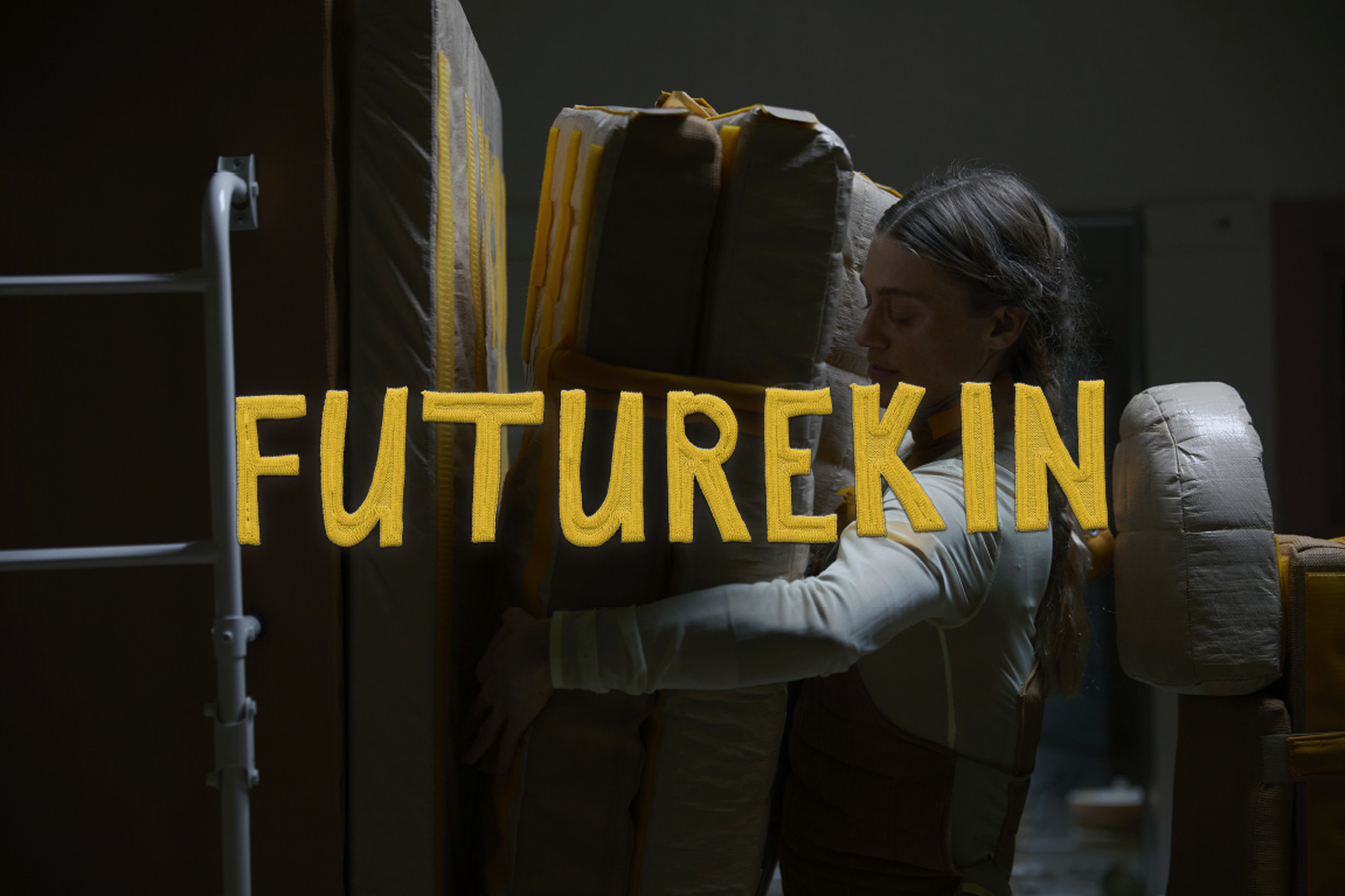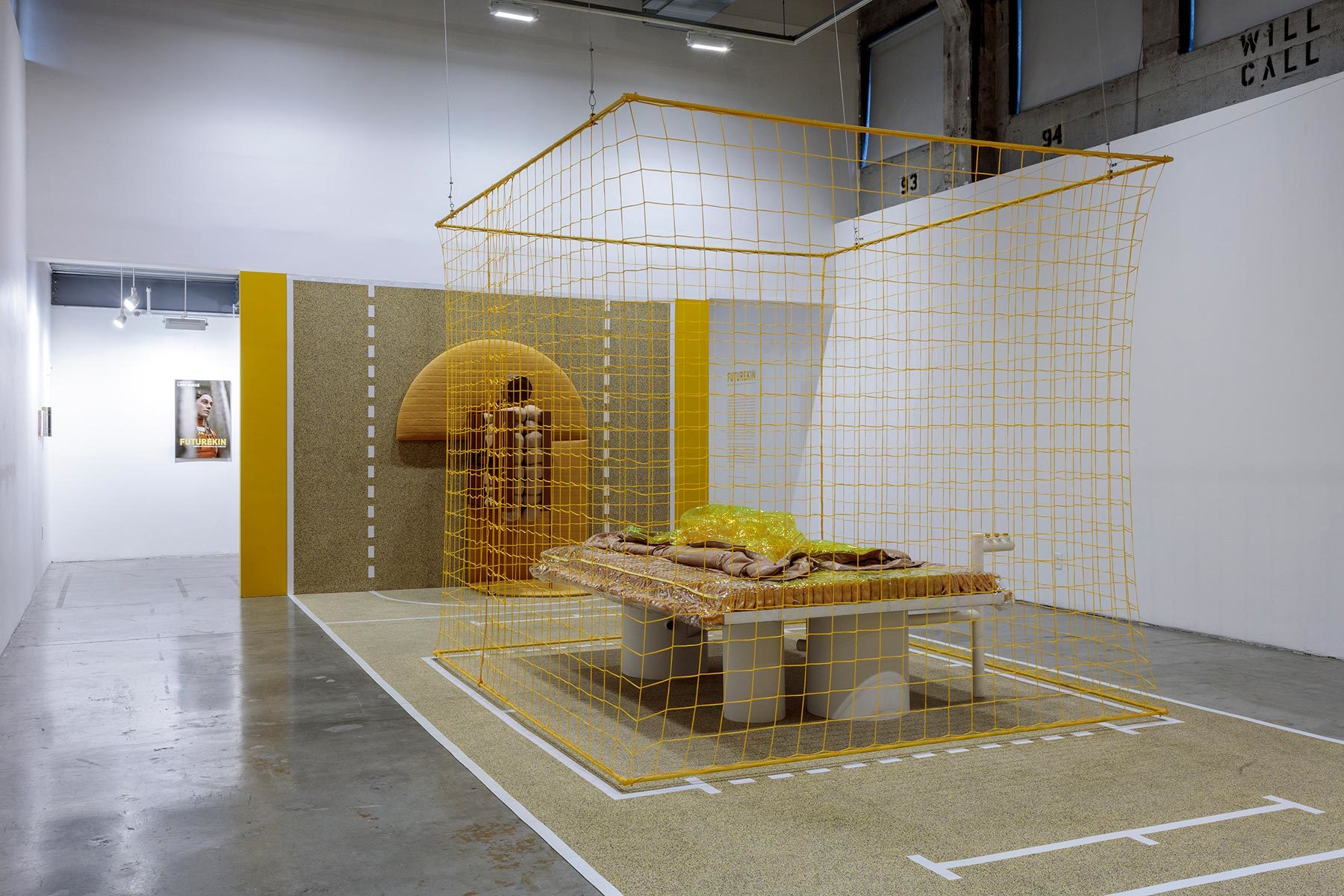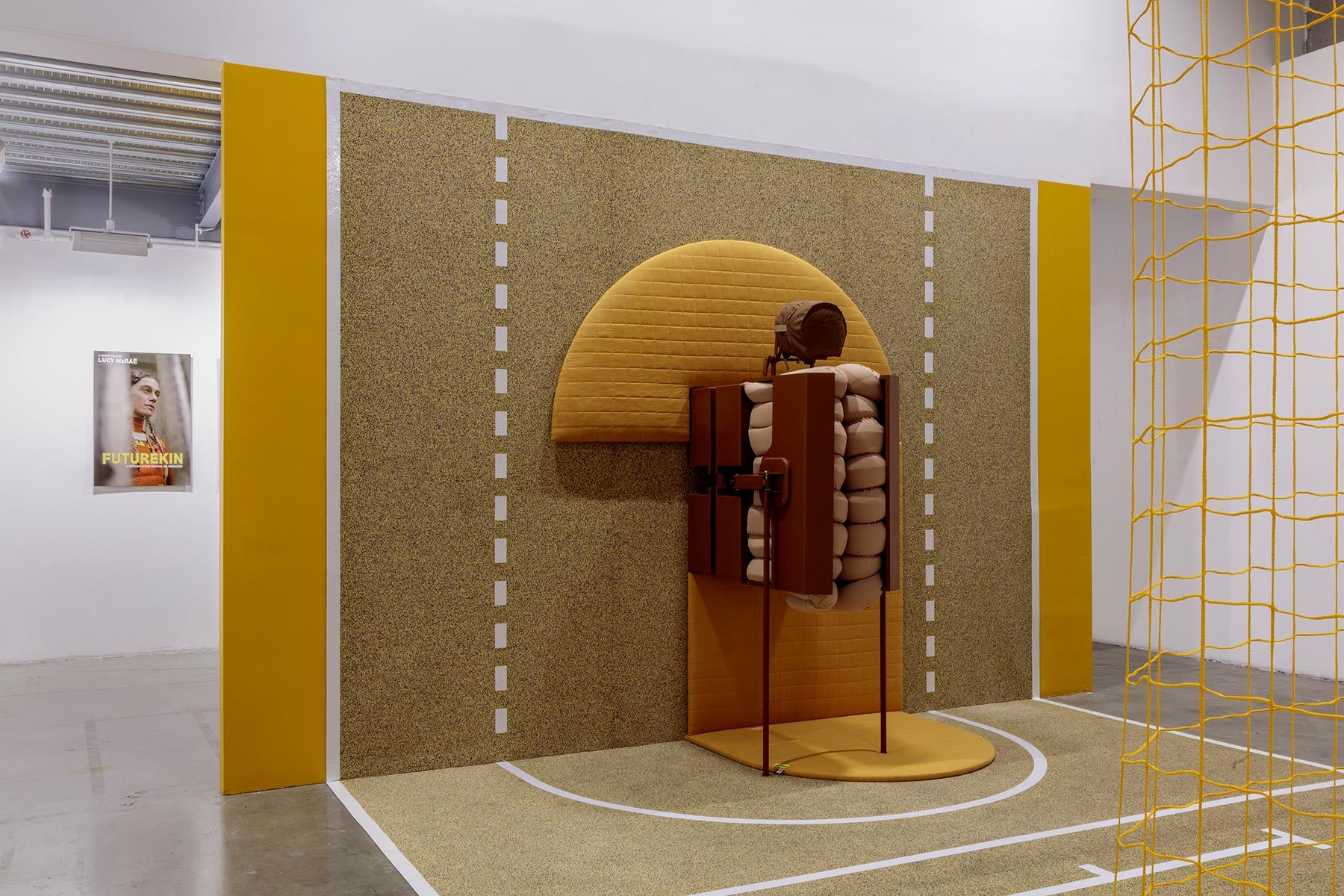The SCI-Arc Gallery is open daily from 10am - 6pm. Please access the building via the health screening tent located at 350 Merrick Street, Los Angeles 90013.
Lucy McRae: FUTUREKIN
Lucy McRae’s solo show at SCI-Arc, is set in a post CRISPR world, where kids are brought to term and grown in complex, sensitive wombs in a lab. The speculation anticipates ‘future-kids’ develop unfamiliar, neurobiological quirks, through lack of touch and fetal programming that takes place in the womb. By virtue of women being separated from pregnancy, science and biotech take on the roles of invitro maternal and paternal surrogates. This far-future what if, replaces abortion and a plethora of other incomprehensible questions, with enormous, ethical unknowns.
Pointing to a future where childbirth is questioned, McRae considers the new products and methods of care that are traded and handed down, for an advanced reproductive landscape. Three machines are seen within a sort-of sports court scenario, suggesting their recreational use and how they might become integrated into the day-to-day life of these new beings. Heavy duty Love, Compression Carpet and Compression Cradle are mental health machines designed to compensate for a lack of human touch in early life. Sandwiching the body between layers of thick squishy stuff, these sponge-like machines build trust and connection, re-enforcing the protective embrace of a parent, gone lost, by virtue of lab grown origins. Fueling important dialogue on the complex realities of human connection and future intimacy, Lucy finds opportunities to highlight the evolution of care and nurture in a post CRISPR techno world –– forging new types of future, through science and story.

Futurekin.
Donna Haraway in her essay Cyborg Manifesto suggests the idea that gender equality can never be reached until women have been ‘unburdened’ from carrying babies, as that puts them at a position of disadvantage from an evolutionary perspective. Suggesting we divert the womb is not solution driven, nor the artist’s desire, but rather motivates impossible questions –– Would science and technology forever change what makes us human? If we can, should we?
“I am curious about the human consequences of bypassing the womb and that first hug of a ‘mother’ — envisioning a new generation of children having radically different formative years, developing new types of sensitivities and neurobiological quirks. FUTUREKIN questions whether these kids will find new ways for intimacy and togetherness. More broadly, Lucy wants to connect the public with science at street level, where art is no longer a vessel but connected to the bulk of science and tech –– cracking open debate around how God-like technologies, such as CRISPR will change what makes us human forevermore.”
A science fiction artist and body architect, Lucy has a finely tuned ability to imagine other ways of being and, crucially, other possibilities for the human body, which sees her speculate on how it could evolve. She considers how human biology might be augmented by a mixture of physical design, modification of genes and emotions –– technology transforming the body and ethics. Her prophetic aesthetic is flung far from archetypal tropes, boldly staring down the status quo – creating nostalgia for a future about to happen.




